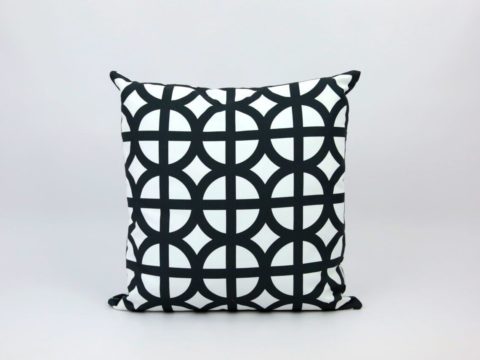Matthew Stuart: Life Story
Chapter 9 : King of Scots
Lennox repeatedly petitioned Elizabeth for Darnley to be sent to him, and his wife also importuned her cousin. Darnley’s presence in Scotland was necessary, said Lennox, for the settlement of the Lennox lands. Eventually, Elizabeth agreed, but required Margaret to remain in England. Quite why Elizabeth let Darnley go has been the topic of much academic ink – did she have enough insight into Darnley’s character to know that, if Queen Mary married him, it would be disastrous for the Scottish queen? Or did she have so little respect for him that she did not think he could cause her any problems? Perhaps she thought that by retaining Margaret, to whom Lennox was devoted, she could control the situation.
Darnley sped north, and entered Scotland, proceeding to Edinburgh, where he met various relatives, then attended the queen, before travelling on to meet his father at the Earl of Argyll’s castle at Dunkeld. Lennox was delighted to see his son, and they quickly returned to the court, where Darnley made every effort to charm all comers – and even attended the Protestant kirk, with a view to being on good terms with the Earl of Moray, Queen Mary’s half-brother, and closest advisor, and the influential Protestant preacher, John Knox.
Whilst for Queen Mary, the support of Lennox and his adherents had advantages, there was the fear that the long-running Lennox-Hamilton feud would disrupt her efforts to manage a nobility prone to faction. She arranged a formal reconciliation, but it was little more than show on the part of Lennox and the Duke Châtelherault, to give the former Earl of Arran the title granted by Henri II of France.
Moray, too, was concerned that Darnley would supplant him in his half-sister’s confidence and once again the Scottish court divided. In favour of a match between Mary and Darnley was, first and foremost, Lennox. Margaret Lennox agreed to surrender her claims to the earldom of Angus in return for support from her Douglas family, which brought them on side. The Earl of Atholl and the Lords Lindsay and Ruthven also favoured it. Against it were Moray, and his brother-in-law, the Earl of Argyll, a confirmed Protestant.
Mary, of course, had the last word. She decided that she would marry Darnley – in many ways, it was a good match. They were of an age and of similar education and tastes, they could combine their claims to the throne of England into a strong single claim, it would avoid the dangers of marriage to a foreign prince that had bedevilled the alliance of Mary I of England to Philip of Spain.
Against the marriage, was the opposition of Moray, but he would probably have objected to any husband, and the potential for annoying Elizabeth of England, but since Elizabeth had failed to make a concrete proposal for recognition of Mary in return for a marriage to the Earl of Leicester, Mary now felt there was little she could do to force her cousin’s hand, and she needed to provide an heir to the kingdom.
Lennox was jubilant. Elizabeth was incandescent and sent orders for both Lennox and Darnley to return immediately to England. Lennox was a naturalised Englishman (he had been granted denizenship, as it was called, at the time of his marriage), so he owed allegiance to Elizabeth. Lennox and Darnley ignored the orders, and Elizabeth retaliated by sending Lady Lennox to the Tower, and confiscating all of the Lennox English lands.
On 29th July 1564, Lennox and Atholl escorted Queen Mary to her chapel at Holyrood, then brought Darnley in to join her. The marriage was performed according to Catholic rites, although a papal dispensation had not yet been received. Mary had already bestowed lands and titles on her husband, and he was also awarded the title of King of Scots.
Lennox’ greatest ambitions had been realised – or so he thought. The morning after their marriage, King Henry was proclaimed at the Mercat Cross. Mary having given orders that his title should take precedence, the proclamation was signed by ‘Their Majesties’ in the 1st and 23rd years of their reigns with Henry R and Maria R at the foot.
The same arrangement, for the king to be mentioned first, had been made between Mary I of England and her husband, Philip of Spain, but the listening nobles and the city populace were not impressed: silence reigned. Eventually, someone called out ‘God save the king’, but the hearty well-wisher was none other than the king’s father, Lennox.
The immediate impact of the marriage was an open breach between Mary and Moray. This was a serious matter – Moray, a Protestant, had had the support of much of the nobility, and Mary’s willingness to work with him had smoothed her passage to taking control of the country. But she would not tolerate Moray’s attempts to dominate her, and when he accused Lennox and Darnley of conspiring to murder him, she lost patience, demanding he come to court and explain himself. Moray refused – an act of rebellion.
Confident that with her marriage, which brought support from the Lennox and Douglas factions Mary could impose her will, she called up her troops and set about capturing Moray. The vanguard was led by Lennox, the Earl of Morton (a Douglas cousin of Lady Lennox) led the middle guard, and Mary and Darnley, both clad in armour, led the rearguard. The ‘Chaseabout Raid’ was successful in that it drove Moray out of the country, but it stored up trouble for the future.
Matthew Stuart, 4th Earl of Lennox
Family Tree




